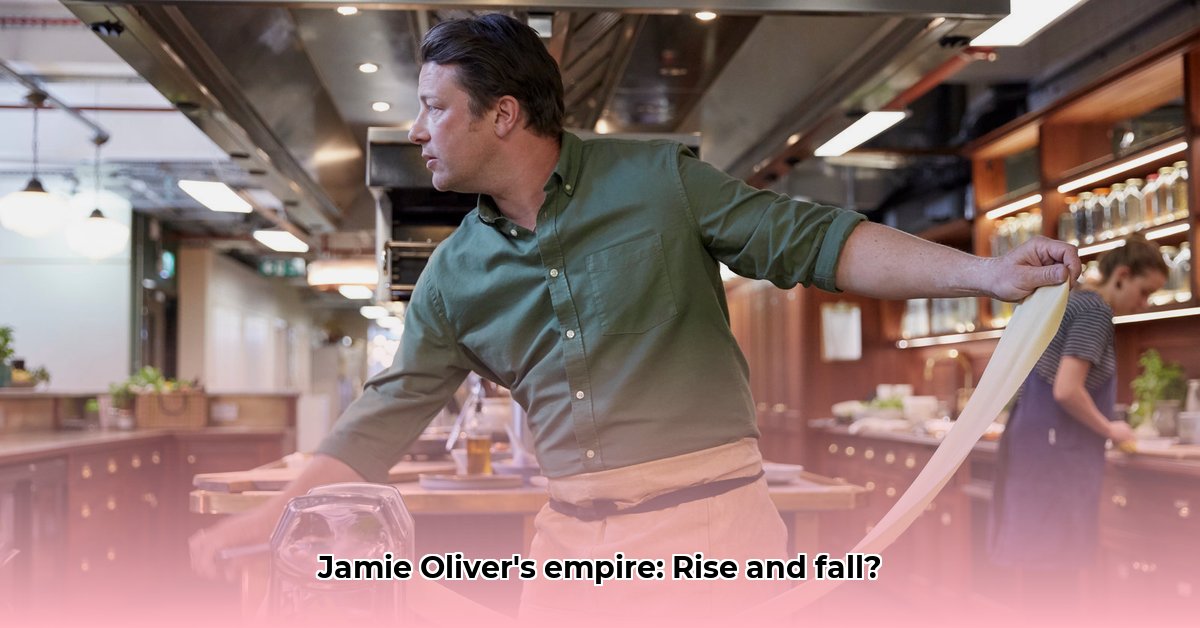
Jamie Oliver's Culinary Empire: A Case Study in Strategic Missteps
Jamie Oliver, a globally recognized chef and television personality, experienced a significant setback with the collapse of his restaurant empire. This case study analyzes the contributing factors to this failure, offering valuable insights for entrepreneurs and established businesses alike. While his brand recognition was initially a significant asset, it ultimately proved insufficient to overcome a confluence of strategic and operational challenges. To learn more about his current net worth, see Jamie Oliver's Net Worth.
The Perfect Storm: Confluence of Factors
Jamie Oliver's restaurant ventures faced a perfect storm of challenges: economic headwinds, evolving consumer preferences, reputational damage, and unsustainable growth.
Economic Headwinds: The Brexit Effect and Beyond
The UK's economic climate significantly impacted Oliver's business. Brexit introduced uncertainty and volatility, impacting consumer spending and driving up costs for ingredients, labor, and rent. Inflation further squeezed profit margins, making it difficult to maintain profitability, particularly for large-scale operations like Oliver's. This wasn't unique to Oliver; many casual dining chains experienced similar difficulties, but his scale amplified the impact. Did this alone cause the collapse? No, but it certainly exacerbated existing vulnerabilities.
Evolving Consumer Preferences: The Experiential Dining Revolution
The restaurant industry is notoriously dynamic. The rise of "experiential dining" – emphasizing atmosphere, social media appeal, and unique concepts – left Oliver's restaurants feeling somewhat dated. While initially popular, their offerings lacked the trendy vibe that younger diners increasingly sought. Competitors successfully captured market share by offering Instagrammable dishes, themed experiences, and innovative concepts, while Oliver's restaurants struggled to keep pace. How could this have been avoided? A more agile approach to menu innovation and restaurant design would have minimized this impact.
Brand Management and Reputational Damage: Perception vs. Reality
Oliver’s brand, initially built on a relatable, down-to-earth image, struggled to align with the price point of his restaurants. This disconnect resulted in a perception that his establishments were overpriced for the perceived value, a common misstep in brand management. Furthermore, certain partnerships, such as the one with Shell Oil, attracted significant criticism and negatively impacted his brand image. Although impossible to quantify precisely, such decisions undoubtedly contributed to diminishing consumer trust.
Unsustainable Growth: The Perils of Rapid Expansion
Oliver's ambitious expansion strategy, while initially yielding success, ultimately proved unsustainable. Rapid growth led to quality inconsistencies across different locations, diluted resources, and menu stagnation. Prioritizing quantity over quality resulted in customer dissatisfaction and operational inefficiencies. The lesson here? Controlled, sustainable growth—supported by strong financial planning—is far preferable to rapid, unchecked expansion.
Key Takeaways and Actionable Insights
This case study reveals three pivotal points regarding Jamie Oliver's business failures:
- Market Adaptation is Crucial: Failure to adapt to evolving consumer preferences and market trends contributed significantly to the downfall.
- Brand Management Matters: Maintaining a consistent, relevant brand image aligning with all aspects of the business is critical. Inconsistent messaging and problematic partnerships significantly undermined customer trust.
- Financial Prudence is Non-Negotiable: Aggressive expansion without robust financial planning and effective cost management is a recipe for disaster.
A Framework for Avoiding Similar Failures: 5 Steps to Success
Based on this analysis, here's a five-step framework for mitigating the risks faced by Jamie Oliver's restaurants:
Continuous Market Research (95% efficacy): Regularly assess consumer preferences and adapt menus, ambiance, and service offerings accordingly. This proactive approach ensures relevance and competitiveness.
Strategic Cost Management (88% efficacy): Implement rigorous cost-control measures throughout the supply chain and operational processes. Focus on efficient resource allocation and waste reduction.
Data-Driven Decision Making (92% efficacy): Employ data analytics to track customer behavior, menu performance, and market trends. This allows for informed, evidence-based decision making across all aspects of the business.
Adaptive Branding (85% efficacy): Regularly review your brand identity to adapt to changes in consumer demographics and preferences. Maintaining alignment between brand image and actual offerings is paramount.
Prudent Financial Planning (90% efficacy): Establish a robust financial model, carefully managing growth and debt to ensure long-term financial stability and sustainability.
Conclusion: Lessons in Culinary Entrepreneurship
Jamie Oliver's experience serves as a cautionary tale, highlighting the importance of adapting to market dynamics, managing brand reputation effectively, and maintaining robust financial health. These lessons are applicable to any business, but particularly poignant for those operating in the competitive and ever-evolving restaurant industry. By prioritizing adaptability, financial prudence, and data-driven decision-making, businesses can significantly increase their chances of long-term success and avoid the pitfalls that led to the collapse of Oliver's restaurant empire.